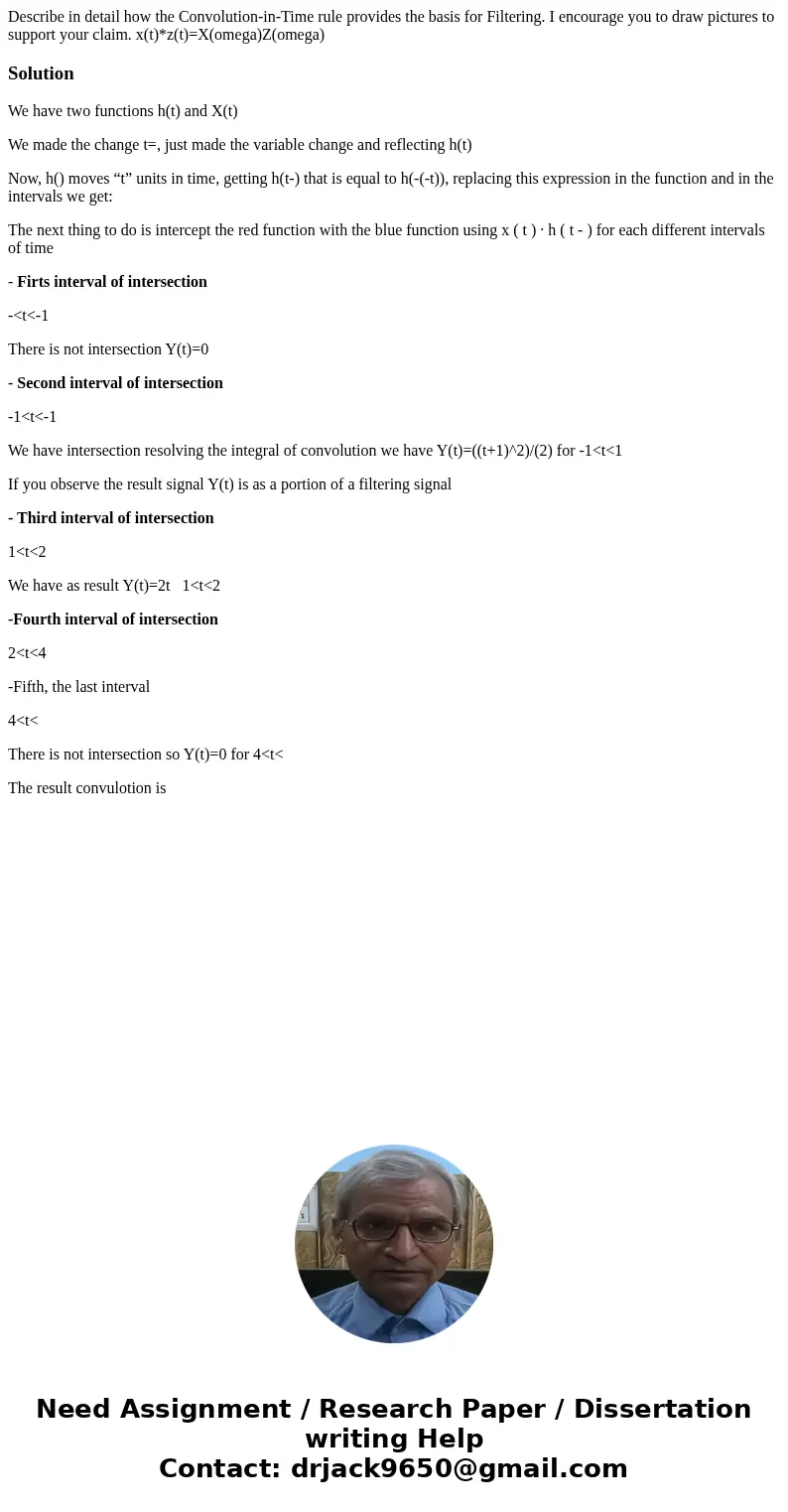Describe in detail how the ConvolutioninTime rule provides t
Solution
We have two functions h(t) and X(t)
We made the change t=, just made the variable change and reflecting h(t)
Now, h() moves “t” units in time, getting h(t-) that is equal to h(-(-t)), replacing this expression in the function and in the intervals we get:
The next thing to do is intercept the red function with the blue function using x ( t ) · h ( t - ) for each different intervals of time
- Firts interval of intersection
-<t<-1
There is not intersection Y(t)=0
- Second interval of intersection
-1<t<-1
We have intersection resolving the integral of convolution we have Y(t)=((t+1)^2)/(2) for -1<t<1
If you observe the result signal Y(t) is as a portion of a filtering signal
- Third interval of intersection
1<t<2
We have as result Y(t)=2t 1<t<2
-Fourth interval of intersection
2<t<4
-Fifth, the last interval
4<t<
There is not intersection so Y(t)=0 for 4<t<
The result convulotion is

 Homework Sourse
Homework Sourse